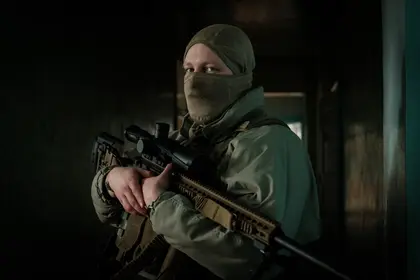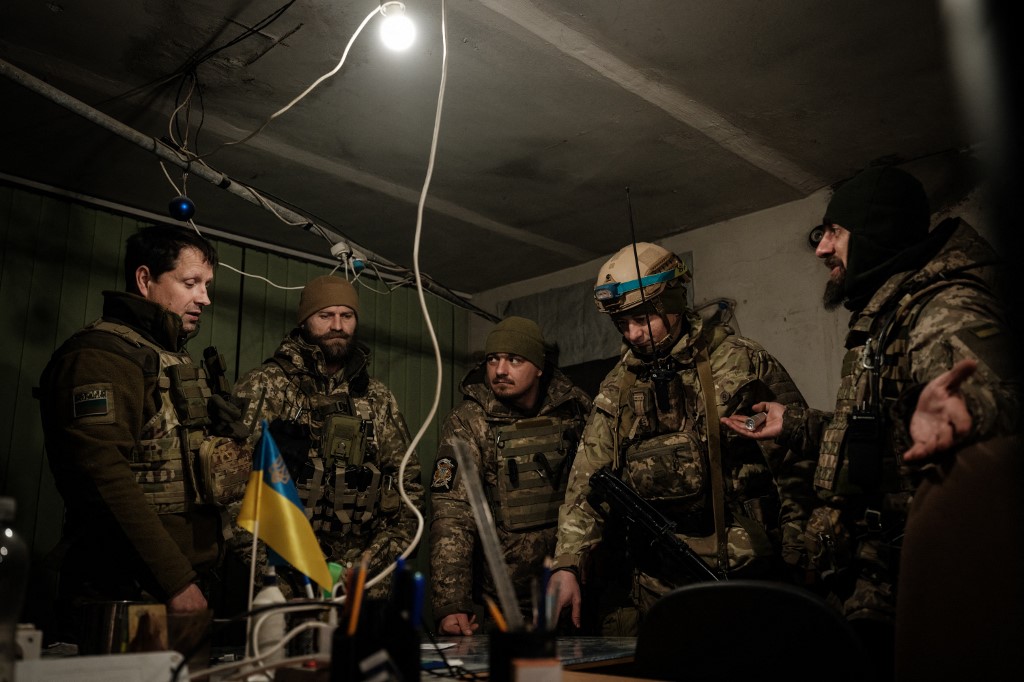"I'm not afraid of Russians," says "Voron", a sniper with the State Border Guard of Ukraine in the eastern Donbas region.
"But don't tell my mum I'm here," he adds, laughing.
JOIN US ON TELEGRAM
Follow our coverage of the war on the @Kyivpost_official.
The 29-year-old soldier's mother probably guessed, as her son has been in the military for 12 years -- and that he has wanted to be a sniper since childhood.
In action films, snipers are typically portrayed as ruthless, silent lone wolves, lying in wait to pick off prey with clinical efficiency.
But "Voron" -- whose Ukrainian call sign means "Raven" in English -- describes a different reality.
"Usually the kit I have doesn't always fit into one car," he says from behind a thermal balaclava ski mask to keep out the biting cold and protect his identity.
To carry out his tasks, Voron needs much more than his AXMC, a rifle that can hit targets up to 1.5 kilometres (nearly one mile) away.
"It's shovels just for building up your position, ammunition of course, your covering group and spotter... usually five or six people, four at a minimum."
- 'The eyes of your commander' -
Despite fierce fighting and heavy shelling in places like Bakhmut, the winter months have slowed down the battle for the Donbas region.
But the conflict is expected to intensify as the first anniversary of Russia's invasion approaches on February 24.
Snipers have been playing their part.
They can conduct reconnaissance missions on targets up to three kilometres away or shoot small groups of enemy fighters from hidden positions.

EU Transfers €1.5 Bln Raised From Russian Assets for Ukraine
Their first task is to meticulously monitor for any changes in the area.
"Brushwood that wasn't there the night before... might be an enemy sniper if it's a rural area," he explains.
"In more urban areas, you're looking for any changes in the windows and the roofs and something that is not how it should be... everything is a threat."
Voron dodges a question about how effective snipers have been in the war so far.
Still, he maintains that snipers remain essential, even if he acknowledges they are not a cure-all.
"Some people hate us. But if there is any trouble people always want us there," he says.
And they hold a special place inside the paramilitary unit, which in peacetime patrols Ukraine's borders.
"You're the eyes of your commander and you're the one who will eliminate the most dangerous threat -- unless it's a tank, of course," he says.
- 'Hard work' -
Looking into telescopic sights for long hours can be stressful, Voron says, but nothing is as difficult as withstanding the frost for hours on end.
Snipers can lie hidden for up to two days in one position.
Even when temperatures recently reached around minus 12 degrees Celsius (10 degrees Fahrenheit), covering the ground in snow and freezing everything, the men have to hold on.
"It's damn cold," he says with a laugh. "Hard work."
But the preparation and the wait, as painful as they may be, are the strength of the snipers.
"There's a joke in the military that if you tell the infantry and a sniper they have eight hours to cut down a tree, the infantry spends eight hours cutting down the tree," he says.
"The sniper spends seven hours sharpening the axe, then cuts it down with one blow."
You can also highlight the text and press Ctrl + Enter







